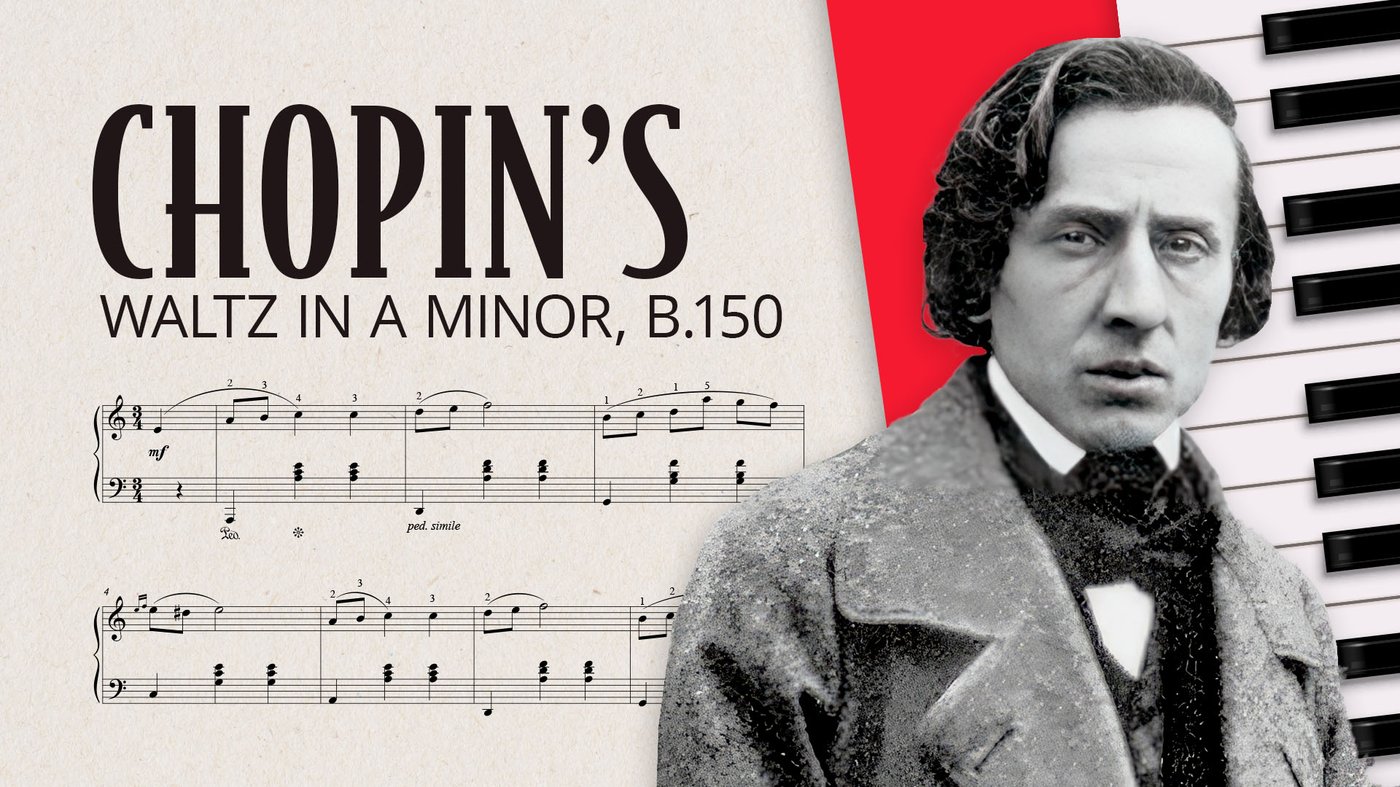
Want to download and master Chopin Waltz in A Minor sheet music? This is the page for you!
When I was first learning how to play piano, I really really wanted to play Chopin. One day, my piano teacher gave me the sheet music to Waltz in A Minor, and it was the first unabridged, original Chopin piece I ever learned. I remember this moment fondly because I had unlocked a major piano level: playing original Chopin!
So, in this post, I hope you get that moment too 🙂 We’ll introduce you to Chopin’s musical style and give you some pointers to successfully tackle this piece. As one of the easier Chopin pieces, the Waltz in A Minor should be accessible to early-intermediate piano players. But if you’re not there yet, we’ve also created a beautiful simplified version you can use as a stepping-stone.
Table of Contents:
Enter your email and we’ll send you a free download of:
By entering your email, you may receive occasional messages from us. But don’t worry: we never spam and you can unsubscribe at any time.
Chopin was born in Poland in 1810 to a French father and a Polish mother. He started his music education early, gave his first concert at age 8, and got his “big break” after publishing Variations, Op. 2 at age 17.
Three years later, Chopin moved to Paris, the cultural center of Europe. Here, he made a living as a piano teacher and befriended artistic types like Eugene Delacroix and Franz Liszt.
Chopin was in a famous romantic relationship with the writer Aurore Dudevant, who went by the pseudonym George Sand. The happiness from this relationship led him to produce some of his finest works. And despite suffering his first bout of tuberculosis, Chopin completed his 24 Preludes, Op. 28 during this time.
Unfortunately, Chopin and Sand ended their relationship in 1847 and Chopin’s health deteriorated. His productivity declined and the composer passed away in 1849 at age 39.
Chopin was unique in that he dedicated himself almost exclusively to the piano, whether that be solo works for the instrument or piano concertos. Here are some elements that make Chopin, Chopin:
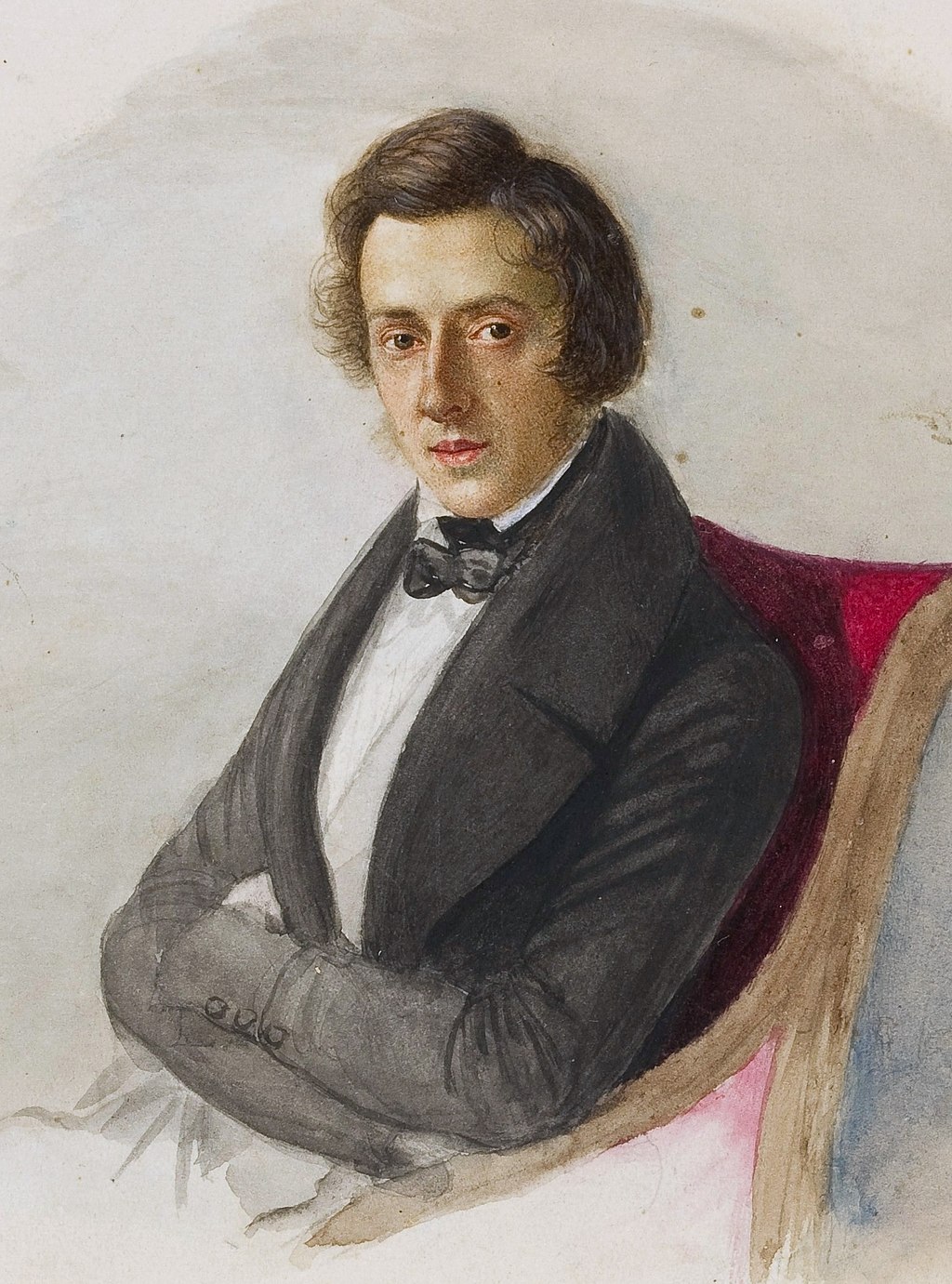
Let’s dive into Chopin’s Waltz in A Minor! Take a look at the sheet music and take note of a few basics:
Being in A minor means we don’t have to worry about sharps and flats—hooray!
But wait: there are quite a few accidentals later in the piece. Many of these are G sharps. That’s because in the A harmonic minor scale, G is the seventh note of the scale and gets raised a half-step.
There are also a few F sharps, C sharps, and D sharps sprinkled throughout. We suggest writing down these accidentals on your sheet music to keep track of them.
Sheet music can look intimidating, especially sheet music by the great Chopin! So take a deep breath…and then see if you can spot any patterns.
When experienced musicians read music, they don’t read every single note. They look for patterns. It’s a little like recognizing the word “cat” instead of sounding out every letter “c-a-t.”
Check out these sight-reading shortcuts:
Chord shapes: Recognizing chords and chord shapes will go a long way. In the first section, the waltz is based on the Am, Dm, G7, and C chords.
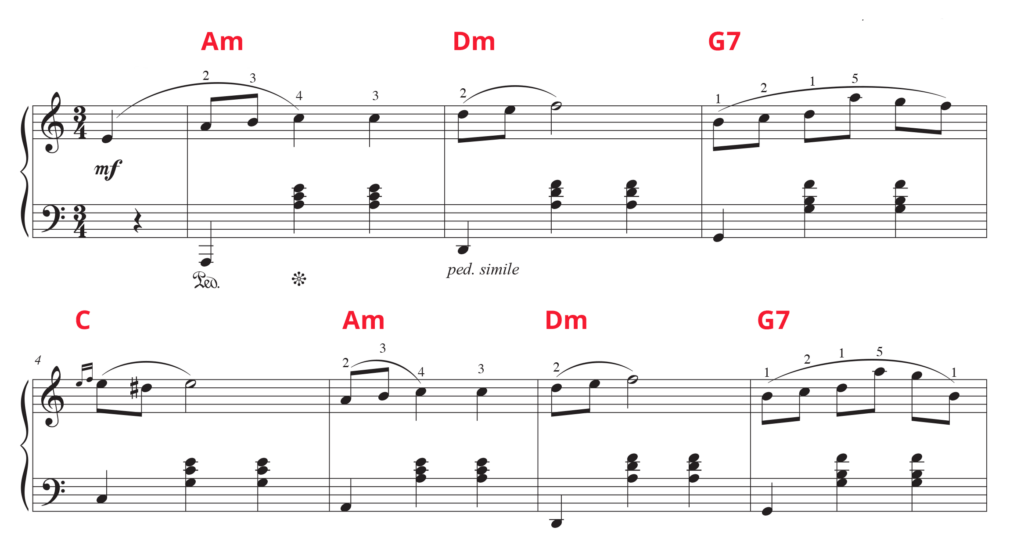
If you know your inversions, you can use your knowledge to recognize the shapes of chord inversions.
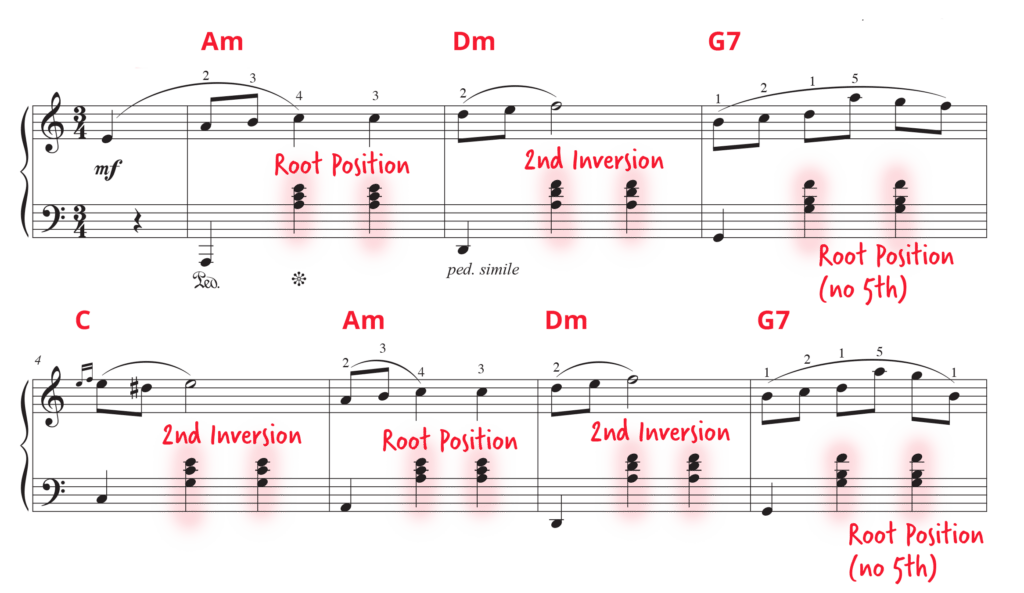
Scale shapes: This measure contains a scale that resembles an E major scale without the C sharp.

Later on, there’s also a passage made up of notes from the B minor scale with an added G sharp.

You may notice an intricate-looking run in measures 21-24…
This is the climax of the piece and a great opportunity to show off your skills, but it can feel intimidating. Don’t be scared! Rather, let’s break it down…
First, notice that there’s a triplet followed by a quintuplet. If this looks confusing, draw lines on your sheet music to indicate where the right and left hands match up.

Next, take a look at those notes: E-G#-B. Those are the notes from an E major triad. You’ll see that the run is just a broken E major chord, transposed across three octaves! See? Not scary at all 🙂

The fingering in measures 22-23 can be tricky. We recommend writing it down and practicing sloooowly. And if our fingering feels awkward for you, make up your own! Everyone’s hands are different.
Remember to open up your right hand on that last octave stretch!
Phrasing. Think of phrases as sentences and connect the notes together in a phrase (legato). Remember: Chopin was inspired by the human voice. Physically taking a breath at the beginning of a phrase and exhaling throughout will also help you make your piano “sing.”
Pedaling. Chopin pieces tend to be generous in their use of pedal, but try not to overuse the sustain! Pay attention to pedal markings and lift the pedal regularly to clear the muddiness.
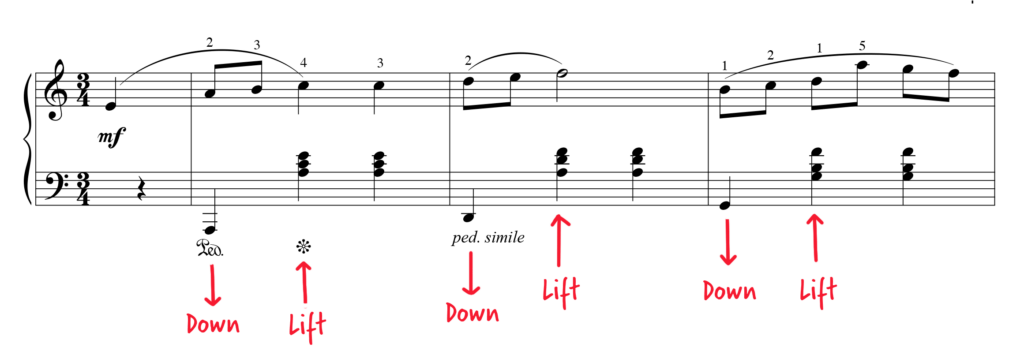
Mordents. This squiggly line is called a mordent. It means to quickly play the note above and return. You can think of it as a single trill.

Mastered this piece? Congratulations! Here are more classical pieces with tutorials and sheet music downloads you can try:
Or take a look at our list of 40+ famous classical piano pieces, organized by difficulty.
And if you like our Chopin Waltz in A Minor sheet music, check out The Most Beautiful Classical Piano Pieces! It includes sheet music from famous pieces like “Für Elise,” “Claire de lune,” Gymnopédie No. 1, and more.
Learn more about the book and get your copy today.
Subscribe to The Note for exclusive interviews, fascinating articles, and inspiring lessons delivered straight to your inbox. Unsubscribe at any time.
Sources and further reading:
Charmaine Li is a Vancouver writer who has played piano for over 20 years. She holds an Associate diploma (ARCT) from the Royal Conservatory of Music and loves writing about the ways in which music—and music learning—affects the human experience. Charmaine manages The Note. Learn more about Charmaine here.
/marketing/pianote/promos/april/banner-bg-m.webp)
We use cookies for traffic data and advertising. Cookie Policy »
/marketing/pianote/promos/april/banner-title.webp)